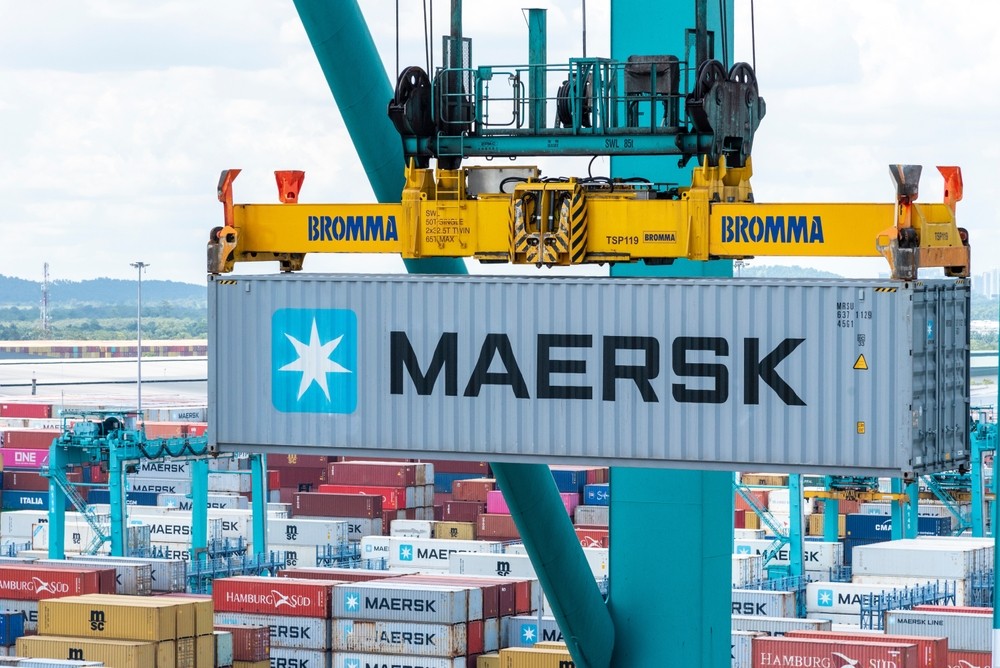
Case Update - Stournaras Stylianos Monoprosopi EPE -v- Maersk A/S (“Maersk Klaipeda”) [2024] EWHC 2494 (Comm): Container Fraud
January 9th, 2025
Introduction
The Commercial Court recently issued a judgment clarifying the extent of a carrier’s duty to confirm the weight of containers against the information recorded in shipping documents, including draft bills of lading.
Background
In November 2019, Stournaras Stylianos Monoprosopi (the “Claimant”), a scrap metal trader based in Greece, made three copper wire purchases (the “Cargo”).
The Cargo was shipped in 22 containers from Jebel Ali, Dubai to Piraeus, Greece under three clean bills of lading (“B/Ls”). The B/Ls were issued by Maersk A/S (the “Carrier”) and included shipping instructions that had been provided by the Dubai-based shipper, Alembery General Trd Fzc (the “Shipper”), which listed the declared weight of the Cargo.
Whilst the Cargo was still at the loading terminal, the terminal operator, DP World, had weighed and issued Verified Gross Mass certificates (“VGM”) which recorded that the actual weight of the Cargo was less than what was declared by the Shipper.
Following the issuance of the first two clean B/Ls, the Claimant paid the Shipper a total of USD459,000 for the first two consignments. However, the Claimant subsequently noticed that there were significant discrepancies between the weight recorded on the VGM certificates and the weight stated on the bills of lading.
Upon arrival at the discharge port in Piraeus, a survey was conducted which confirmed that: (a) the weight on the VGM certificates was accurate for both consignments; and (b) the contents were not copper wire, but instead the containers had “in fact been stuffed with worthless concrete blocks”. Therefore, given that the Claimant had already paid for two out of the three consignments, the Claimant initially sought to recover its losses from the Shipper and had therefore obtained a default judgment in its favour in Dubai. However, given that the Shipper had disappeared, the Claimant was unable to enforce the judgment.
As a result, the Claimant brought a claim in the English Court against the Carrier on the basis that the Carrier had issued clean B/Ls, instead of claused bills, despite the fact that they should have been aware that there were significant discrepancies in relation to the weight that was declared by the Shipper and the value recorded on the VGM certificates. Specifically, the Claimant advanced its claim on the following grounds:
- The Carrier breached Article III Rule 3 of the Hague Rules (which were incorporated in the B/Ls) by failing to determine with reasonable care and skill the apparent order and condition of the goods at the loading terminal;
- A claim in tort for negligent misstatement; and
- The Carrier breached its duty of care as consignee towards the Claimant since, despite knowing and/or suspecting that the terms of the B/Ls were fraudulent, the Carrier proceeded to issue clean bills of lading.
In turn, the Carrier denied the allegations on the basis that:
- When the shipments were made in 2019, the Carrier did not have a system in place to compare the Shipper’s declared weight against the VGM data obtained by DP World;
- The VGM data was used solely for safety purposes and for creating the stowage plan;
- That a reasonable inspection of the containers did not require the Carrier verifying the data provided by the Shipper or the VGM.
- The carrier also relied on the phrase “weight unknown” found on the face of the B/Ls and brought a counterclaim for freight, container damage and costs of destruction.
Commercial Court
Initially, the Court determined that there was no evidence indicating that the Carrier knew the Shipper would provide fraudulent weight data. Therefore, the Carrier was not obligated to verify the weight stated by the Shipper against the data recorded on the VGMs.
Finding in favour of the Carrier, the Court held the following:
- The Claimant was unable to demonstrate that the Carrier was aware of any obvious weight discrepancy between the shipping instructions provided by the Shipper and the VGM data. The Claimant’s claim therefore failed on the facts as there was no evidence that the Carrier had any reason to consider in 2019 that the Shipper had provided fraudulent data that would require the Carrier to compare the declared weight against the actual weight data.
- The phrase “apparent order and condition” referred to in Article III rule 3(c) of the Hague Rules, relates to the external condition of the containers as would be apparent on a reasonable examination. The Court therefore found that the Carrier was not in breach of this provision as a visual inspection of the containers could not determine the weight of the contents inside a sealed container. As such, the B/Ls validly confirmed the Shipper's declarations, and the Carrier was justified in relying on the disclaimer in its B/L terms (Clause 14.2), which indicated that the information was provided without any responsibility or representation by the Carrier.
- The Court found that the Carrier had not made any implied negligent misstatements about its knowledge as to the discrepancy between the actual weight and the declared weight. Specifically, the court emphasised that Article III Rule 3 of the Hague Rules stated “Provided that no carrier, master or agent of the carrier shall be bound to state or show in the bill of lading any marks, number, quantity, or weight which he has reasonable ground for suspecting not accurately to represent the goods actually received, or which he has had no reasonable means of checking,”. As such, the Hague Rules created no room for an implied representation by a carrier in relation to the particulars of cargo.
- The Court acknowledged that given the significant difference between the weight listed on the B/Ls and the VGM weight, an assumption could be made that the B/Ls were used as a fraudulent instrument. However, the Carrier did not owe the Claimants a duty of care to prevent fraud as it transpired in this case. As mentioned above, the Carrier was under no obligation to compare the declared weight against the actual weight data.
Comments
This authority confirms that a carrier’s duty to investigate the condition of containers is limited and typically restricted to an external inspection of the container itself and does not necessarily require a thorough inspection of the containers individually inside and out to confirm whether they comply with the shipping information.
However, it must be noted that the Court’s findings in the current case are based on 2019 practices. Since then, the Carrier has upgraded its systems in order to use the VGM data and minimise VGM misdeclarations. Therefore, a different result could prevail in those changed circumstances.
Are you on board?
Get in touch